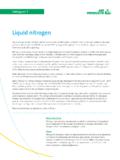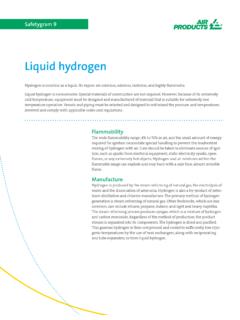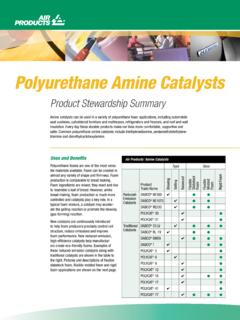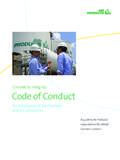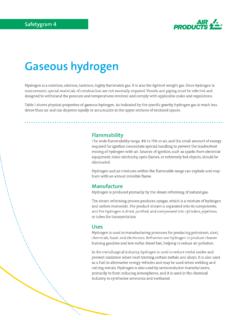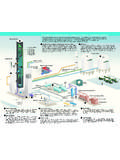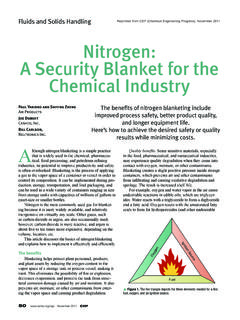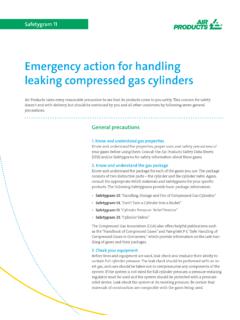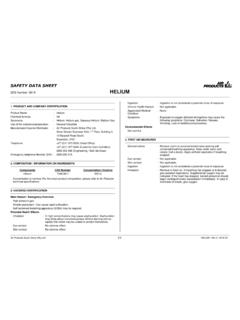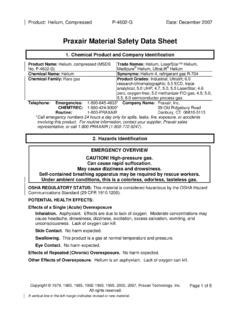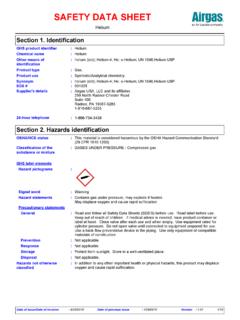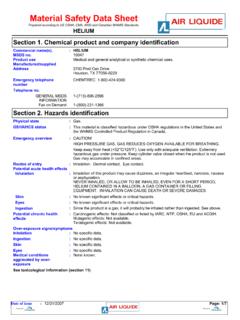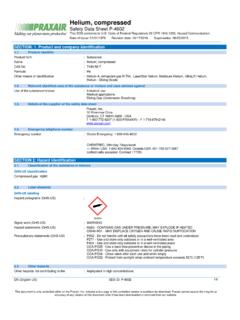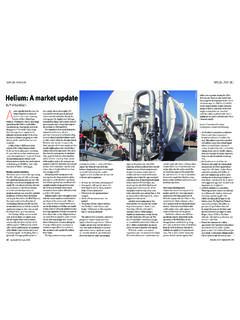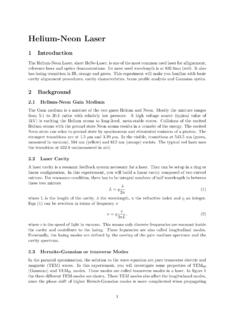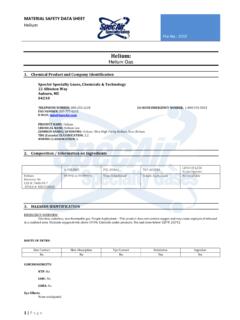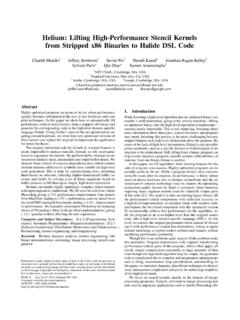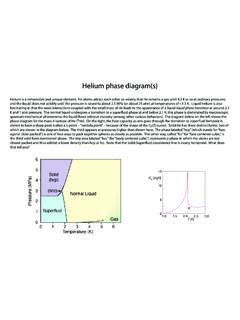Transcription of Helium - Air Products & Chemicals
1 HeliumHelium is the second-most abundant element in the universe, after hydrogen. Most Helium is recovered from natural gas, so it is not a renewable resource. The demand for Helium is increasing. Many industries use it, including science and healthcare, metal fabrication, electronics and and BenefitsHelium is a multipurpose molecule with many unique properties. For example, liquid Helium can cool most metal to temperatures near absolute zero. This reduces the metal s electri-cal resistance, so an electrical current applied to the metal will flow without stopping. This state, known as superconductivity, makes magnetic resonance imaging (MRI) technology possible. Hospitals and diagnostic centers need Helium to run their MRI equipment.
2 Helium also helps some patients with chronic lung prob-lems breathe more easily and helps patients survive certain types of of metal Products , from lawn chairs to tank trucks, boats, and even rocket ships, use Helium . Helium gas conducts heat well and is truly inert. These properties are useful for metal fabrication, where Helium can shield metals from the metal oxide impurities that form if oxygen touches the weld bead, and can assist in greater weld penetration when thick metal parts are being welded together. Helium s inherent purity also helps the elec-tronics industry increase productivity in manu-facturing and processing silicon of the extremely low solubility of Helium in water (and therefore blood), deep-sea divers often breathe a mixture of Helium , oxygen and other gases to keep them safe from nitrogen narcosis, or rapture of the deep.
3 Helium is lighter than air, so it is the gas of choice for lifting things, from toy balloons and weather balloons to blimps. chemical Identity chemical Formula: HeProduct Stewardship Summary Other names: gaseous Helium , liquid heliumHealth EffectsOxygen is the only element in the air we breathe that supports life. Elevated levels of Helium or other gases in the air lower the amount of oxygen available to breathe. This can lead to dizziness, nausea, vomiting, loss of consciousness and death. No one should enter an area with less than percent oxygen without special breathing equipment to prevent suffocation. The fact that Helium is commonly used to fill balloons for parties and other entertainment activities makes it attractive to people seeking amusement.
4 Inhaling Helium from cylinders or balloons is a dangerous misuse that can lead to unconsciousness, suffocation and death. As is the case with any inhaled gas, includ-ing Helium , if extremely high-pressure Helium is inhaled into the lungs, the lungs can burst and death can occur from internal bleeding. Inhaled Helium from cylinders or balloons can also displace air from the lungs and reduce the available Helium is so cold that skin contact can result in severe frostbite, skin burns and other tissue and chemical Properties Helium is the least reactive member of a spe-cial group of gases known as the noble or inert gases. Helium is described as truly inert, because it does not form stable compounds with other substances under any conditions.
5 Helium has no color or smell, and it does not burn. It is lighter than air. Helium is less water- soluble than any other cooled to extremely low temperatures (-452 F/-269 C), Helium exists in liquid form, known as a cryogenic liquid. Liquid Helium is the coldest known fluid. Environmental EffectsHelium is a natural, inert gas. Most Helium is found in natural gas fields. We can extract Helium from rich natural gas fields and use it safely without harming the environment. Since Helium is a finite resource, it is impor-tant to use Helium recovery and recycling technologies. Industrial UseWe ship Helium as a gas or a liquid. We ship and store gases in liquid form, because they occupy less space that on how much Helium gas our customer uses, we can provide the Helium in different types of containers, including high-pressure cylinders, tubes or tube trail-ers.
6 Industry guidelines cover the storage and handling of compressed gas cylinders. Workers should use sturdy work gloves, safety glasses with side shields and safety shoes when han-dling compressed gas store and ship liquid Helium in cryogenic liquid cylinders and tanks. These containers are similar to heavy-duty vacuum bottles used to keep your coffee hot or your water cold. Because of its low temperature, liquid Helium should never come in contact with skin. If workers handle containers of liquid Helium , it is important to wear a full face-shield over safety glasses to protect the eyes and face. Workers should also wear clean, loose-fitting, thermal-insulated gloves; a long-sleeved shirt; pants without cuffs; and safety shoes.
7 Exposure Potential and Risk Management MeasuresRegulatory Information Several regulations govern the manufacture, sale, transportation and use of Helium . These laws vary by country and geographic region. You can find general regulatory information in the Material Safety Data for Additional Information Air Products - MSDS Compressed Gas Association Air Products SafetygramsConclusionWide varieties of industries use Helium . It is not harmful to the environment, though the world s Helium supply is finite and irreplaceable. Workers can handle it safely when they follow industry and company Potential and Risk Management Measures (continued)To help prevent suffocation, it is important to have good ventilation when working with Helium .
8 Confined workspaces should be tested for oxygen levels. If the oxygen level is lower than percent, personnel, including rescue workers, should not enter the area without special breathing UseFor reasons of safety, quality and regulatory compliance, Air Products recommends that only trained divers or technicians should blend diving gases. Many industry professionals recommend using a decompression planning computer program for diving with Helium . tell me Air Products and Chemicals , Inc., 2009 (30912) 310-08-027-US Tel 1-800-523-9374 (Continental and Puerto Rico) Tel 1-610-481-7711 (other locations) 24 hours a day, 7 days a week For assistance involving Air Products and Chemicals , Inc.
9 Gases and equipment Tel 1-800-752-1597 ( ) Tel 1-610-481-8565 (other locations) Fax 1-610-481-8690 E-mail Monday Friday, 8:00 5:00 ESTE mergency Response SystemTechnical Information CenterWe developed this product Stewardship Summary to give you a general overview of the chemical . This Summary is not meant to pro-vide emergency response or medical treatment information. You can find in-depth safety and health information on the Material Safety Data Sheet for the product . Contact Informatio
